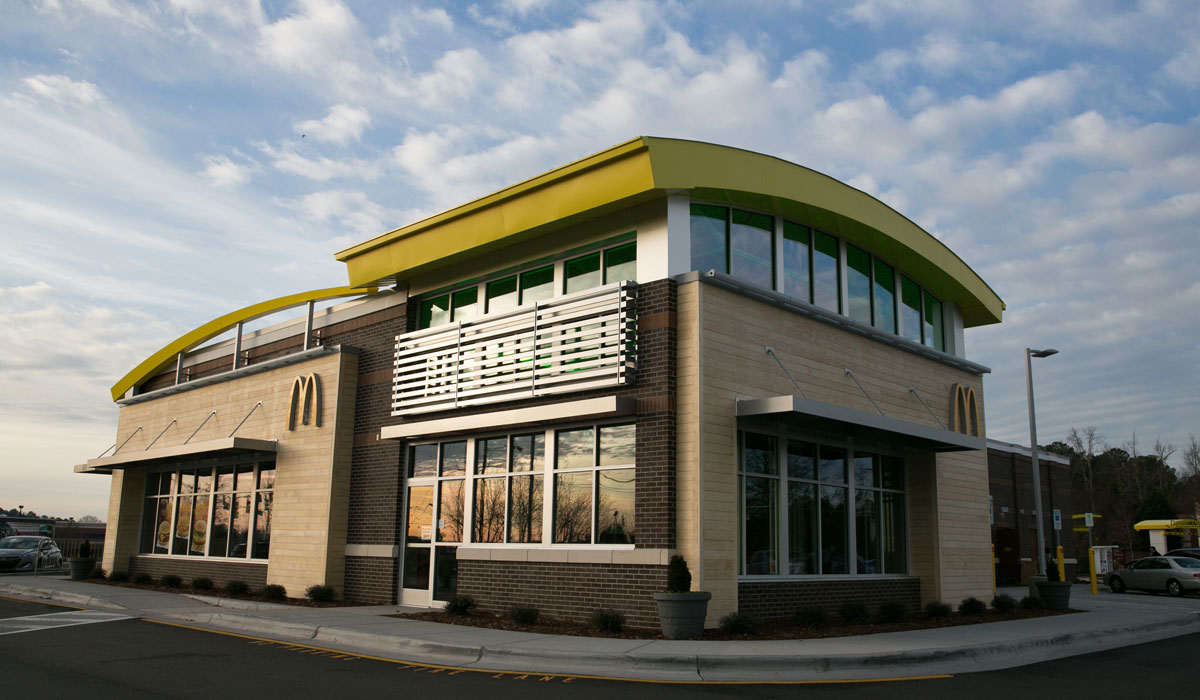McDonald’s took a stand Tuesday (March 19) on a topic few major restaurant brands address: By 2030, the fast-food chain said it will reduce greenhouse gas emissions related to its restaurants and offices by 36 percent from a 2015 base year. This strategy to address global climate change includes 31 percent reduction in emissions intensity (per metric ton of food and packaging) across McDonald’s supply chain by 2030 (from 2015 levels).
“To create a better future for our planet, we must all get involved. McDonald’s is doing its part by setting this ambitious goal to reduce greenhouse gas emissions to address the challenge of global climate change,” Steve Easterbrook, McDonald’s president and CEO, said in a statement. “To meet this goal, we will source our food responsibly, promote renewable energy and use it efficiently, and reduce waste and increase recycling.”
McDonald’s said, through these actions, it will prevent 150 million metric tons of greenhouse gas emissions from being released into the atmosphere by 2030. Or, the equivalent of taking 32 million cars off the road for an entire year; or planting 3.8 billion trees and growing them for a decade.
McDonald’s outlined how it plans to get there as well. The company said it would work across its supply chain, offices, and restaurants to be more innovative and efficient. This includes adding LED lighting, energy efficient kitchen equipment, sustainable packaging, and restaurant recycling, and also by elevating and supporting sustainable agriculture practices. The chain’s target goals were approved by the Science Based Targets Initiative.
“In collaboration with thousands of franchisees, suppliers and producers, McDonald’s will prioritize action on the largest segments of its carbon footprint: beef production, restaurant energy usage and sourcing, packaging and waste. These segments combined, account for approximately 64 percent of McDonald’s global emissions,” the company said.
In this process, McDonald’s said it plans to expand measurement systems and annually communicate its progress, challenges, and milestones. The company wants to identify practical solutions to reduce greenhouse gas emissions and bring them to scale.
“Environmental progress doesn’t just happen, it takes bold leadership from all of us,” said Fred Krupp, president of Environmental Defense Fund, in a statement. “As one of the best known brands on the planet, McDonald’s is well positioned to lead, and its ambitious new climate target will inspire innovation, collaboration, and most importantly critical greenhouse gas reductions across the company’s global operations and supply chain.”
In 2014, McDonald’s released an Energy and Climate Position statement that defined its stance on tackling climate change. In 2015, the company developed a Commitment on Forests that addressed supply chain impacts on deforestation—an issue that accounts for an estimated 15 percent of global greenhouse gas emissions.
“McDonald’s footprint touches all parts of the world. Their announcement matters because it commits one of the world’s biggest companies to deliver, with the full breadth of their food chain system, significant emissions reductions based on science. It also coincides with their decision to join the We Are Still In coalition with thousands of other companies across the US,” said Carter Roberts, president and CEO of World Wildlife Fund in the United States, in a statement. “While private-sector actions can’t entirely solve the climate crisis facing our planet, significant announcements like these, and coalitions like these working on climate together, create momentum and movement toward the scale of solutions that we ultimately need.”
McDonald’s also released its 2020 goals for beef sustainability in 2017. These laid out the next steps for collaboration with beef producers and industry partners to proactively identify, share and scale beef production’s most sustainable practices. So far in 2018, McDonald’s launched new packaging and recycling goals, and reinforced its commitment to supporting families.
The chain said in January that plans to switch to environmentally friendly packaging materials and start offering recycling at all locations. The goal is to feature 100 percent of its packaging from recycled, renewable or certifiable sources by 2025. McDonald’s will lean toward products with Forest Stewardship Council certification as well.
“McDonald’s is delivering a strong statement by becoming the first restaurant company to set a science-based greenhouse gas emissions target. McDonald’s leaders understand that you don’t have to grow emissions to grow as a company,” said Andrew Steer, president and CEO, World Resources Institute, one of the Science Based Targets initiative partners, in a statement. “By working with suppliers to design and scale more sustainable farming practices and reducing waste, McDonald’s will chart a path that is better for its franchise, customers and the environment. WRI urges McDonald’s to look for additional opportunities to align their business model and value chain with the realities of a resource-constrained world. We stand ready to support the company in pursuing strategies that lead to healthier consumers and a more sustainable planet.”







